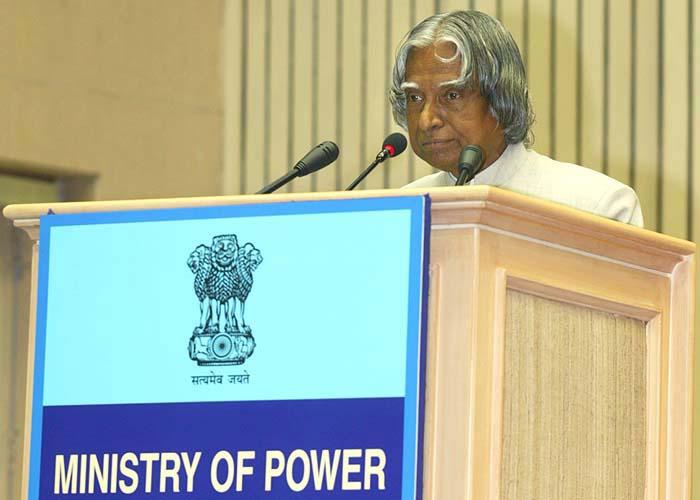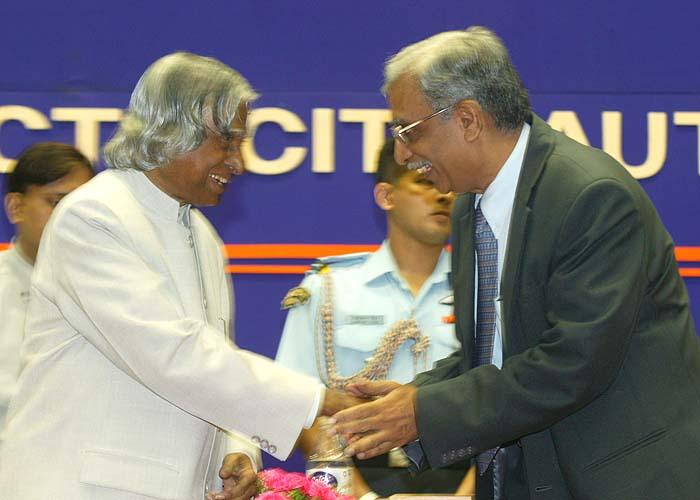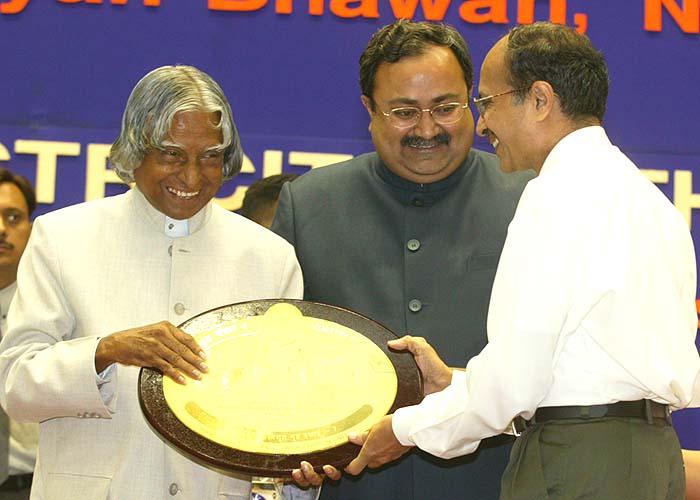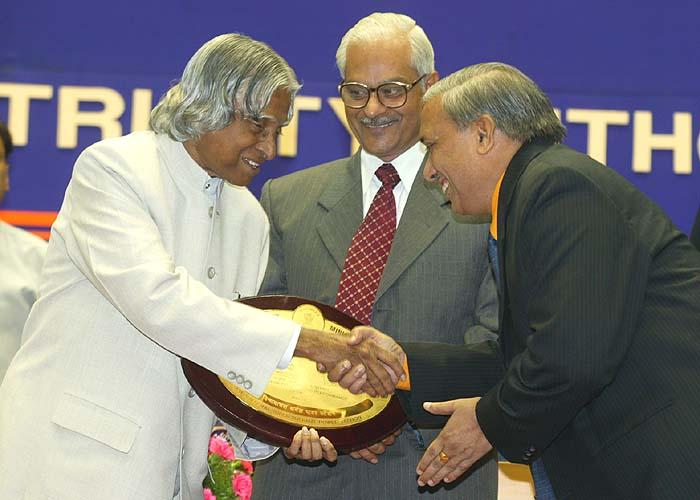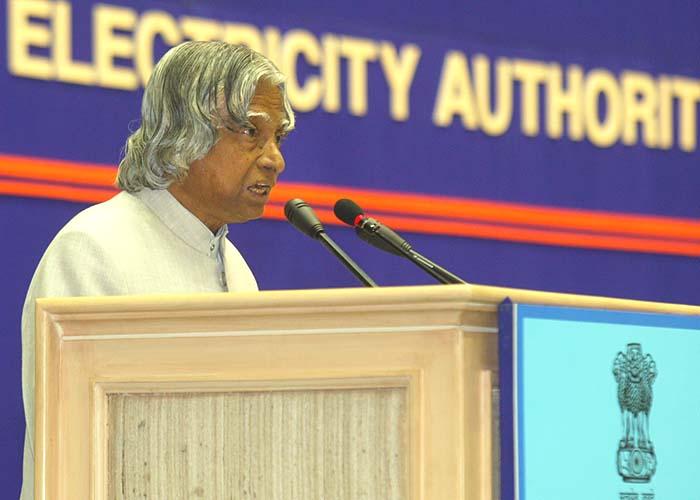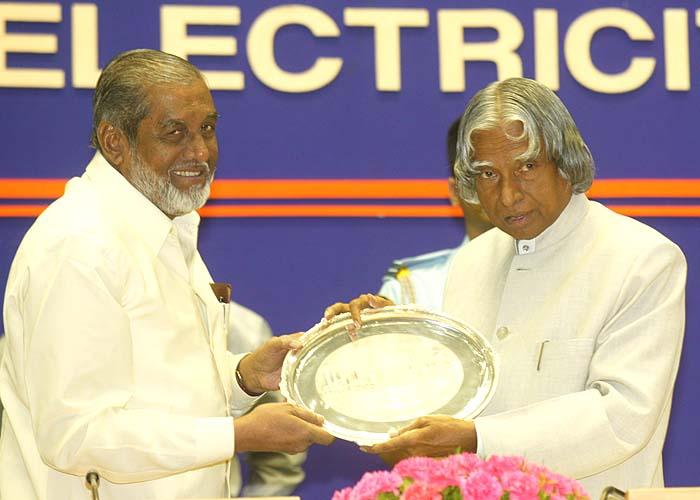Address At The Meritorious Productivity Awards To Outstanding Power Stations
New Delhi : 24-08-2004
'Providing Quality Power to the Nation'
I am indeed delighted to participate in the Meritorious Productivity Awards to outstanding Power Stations. My greetings to the organizers, engineers, technical support staff, members of Ministry of Power and Central Electricity Authority and distinguished guests. I am happy to note that the thermal power stations have increased the plant load factor of thermal power stations from 57 % in 1992-93 to the level of 73 % in 2003-04. Also, there has been considerable reduction in the secondary fuel oil consumption and auxiliary power consumption due to the concerted efforts of the operation and maintenance personnel of the thermal power stations. I congratulate all the award winners for their excellent team work in promoting innovative energy management leading to wealth generation for the nation. Now, I would like to share my thoughts with you on ?Providing Quality Power to the Nation?.
Present Status of Power Generation
The all india installed capacity of electric power stations is One lakh thirteen thousand MW consisting of 78400 MW thermal, 30,000 MW of hydro, 2,700 MW of nuclear and 1,900 MW of wind energy. A capacity addition of 41,000 MW, which includes 25,500 MW of thermal power plant, is targeted for the 10th plan, keeping in view the allocation of funds and power sector preparedness. For meeting the development targets till 2020 our generating capacity has to increase to three hundred thousand MW. We have to study how much of this requirement can be met through thermal power plants in the future.
Power Generation
The process of power generation and utilization includes mobilization of input resources, transportation, power generation system, waste management of power plants, transmission, distribution and consumption by the consumers. There is a need to address the totality of this problem so that the energy can be produced efficiently in a cost effective way, distributed to the required points with minimum loss and finally the consumers get quality power (voltage and frequency controlled with minimum break down). Therefore, there is a need to look at a system of reward for recognizing the overall performance of the sector.
Consortium for Efficiency
In India the production of 78,400 MW is using the basic input of coal or diesel. Majority of our thermal power plants are coal based. Many of our power plants are located far away from the pitheads necessitating large-scale movement of coal by railways. Hence, timely movement of coal and delivery at the power plant sites is an important logistic issue, without which uninterrupted operation of the power plants will become difficult. Also, we must ensure that we are not carrying waste load on wagons. To reduce the waste load it is appropriate to have a beneficiation done at the pithead itself so that the ash is not carried away to the generating sites. I was told out of the 270 millions tonnes of coal being produced, we are getting beneficiated coal (with reduced ash content) only to the extent of 26 or 27 millions tonnes. Hence there is a need to focus attention of beneficiation process by the coal ministry. Thus, we find for successful operation of a thermal power plant, railway ministry and coal ministry are partners to the power ministry. Hence, there is a consortium approach needed between the three ministries to get quality coal to the power plant sites at the time specified by the power plant engineers.
Technologies for Operation and Maintenance
The second important aspect is the power plant operation and maintenance. For generating power at affordable cost it is necessary to reduce the cost of infrastructure and also improve the plant performance. Both these actions are technology driven. The project cost reduction are achieved by exploring the possibility of proper technology selection suited to site requirements, use of economies of scale, adoption of higher unit size of 800 to 1000 MW, proper equipment selection and sizing with optimized redundancy, good design and engineering practices and compact plant lay out. The plant performance improvement has to be directed towards reducing the fuel consumption through various measures like good operation and maintenance practices, improved plant availability, better plant efficiency which have direct influence on the fuel consumption and thus the cost of generation. The reduced fuel consumption directly helps in reduced environmental pollution also.
To minimize the impact of coal based plants on environment the country is putting up power plant using super critical technologies with higher steam parameters for improved plant efficiency and circulating fluidized bed combustion for use of inferior coal. The newer technology option such as integrated coal gasification combined cycle and solar integrated combined cycle are also being explored for adoption. However, there is a need to implement these technologies at the earliest so that we can get better coal, higher efficiency of the plant, reduced transportation load and minimum impact on the environment.
Management of Waste
The next area of concern with the use of coal for power generation has been the increased quantum of ash production, which has reached about 100 million tonnes per year. All out efforts are needed to utilize this ash not only from environmental considerations, but also to avoid land usage for ash dumping. Though there has been a steady progress in ash utilization, which has increased from 3% in 1990-91 to around 27% during 2003-04, it is of utmost importance that we reach the target of 100% ash utilization very quickly. It is reported that the agricultural increase of grains is around 15%, green vegetables 35% and root vegetables 50%, when fly ash is mixed with the soil. Toxicity tests have proved that there is no toxic element due to fly ash. But it has higher nutrients due to increased availability of iron and calcium. The ash can become a wealth generator by making use of it for producing ?green building? materials, road, agriculture etc. Recently, I have inaugurated the CII-Sohrabji Godrej Green Business Centre at Hyderabad, where I witnessed buildings whose annual energy consumption cost is 30% to 40% lower than the conventional buildings. These buildings use fly ash as part of the building materials for preparation of bricks, cement, concrete etc. Recent TIFAC (Technology Information Forecast and Accessing Council) study indicates that the wealth generation capability through the use of fly ash for various applications could be of the order of one billion dollars per year.
Power System Loss Reduction
The major concern is the loss of power in transmission and distribution in our country ranges from 40 to 50%. That means when we generate 78000 MW of power, the consumer gets only 47,000 MW of power, whereas in the industrially advanced nations the loss is only 15% (12,000 MW). Hence we could see, comparatively we have an additional loss of 19,000 MW of what we produce. If we have to install capacity for this 19,000 MW we will have to make an investment of over Rs. 76,000 Crore at a conservative estimate of Rs. 4 Crore per mega watt of power generation. This is the magnitude of the problem we are faced with. We need to take urgent action to remedy the situation and bring down this loss by working on mission mode.
Alternative Sustainable Fuel
Another area of concern is the availability of coal. I hear two types of estimates. One is that the reserves are available for over 100 years and the other talks about 30 to 40 years. Hence, there is a need to find an alternative fuel for our power plants.
One of the promising alternatives is the production of bio-diesel through plants such as Jatropha. Chemical analysis indicates that bio-diesel can safely be used in gas turbines in combined cycle mode, as they are normally used for such capacities. Bio-diesel used in diesel engines has been well demonstrated, but diesel engines larger that 2.5 MW capacities are not commercially available now. A quick estimate of land requirements to meet the fuel needs of a 500 MW combined cycle power plant is 2.7 lakhs hectares, which is significantly large, but we have large amount of waste land allotted for dry land cultivation amounting to 33 million hectares. The yield of bio-diesel is 1.70 tones/hectare. The bio-diesel requirements for a 500 MW (CCGT plant) are approximately 4.3 lakhs tonnes per annum operating at 70% plant load factor. The bio-diesel cost is estimated to be around Rs. 14.60 per liter (TERI Survey), which accounts for all the costs associated with plantation and seed collection, oil extraction and transesterfication. This will provide a long-term solution to the fuel problem on a sustainable basis and also generate large-scale employment opportunities for our rural population.
Conclusion
Apart from creating additional generating capacity for providing energy security, power ministry should concentrate on the following:
a) Reduce the transmission and distribution losses from the existing 31,000 MW in respect of thermal plants to 12,000 MW in a phased manner within the next three years. We should allocate sufficient funds for introducing innovative systems for increasing the transmission efficiency in the power grid and minimizing the unaccounted power through audit and metering. The cost of reducing these losses will be only a small percentage of the cost of generating 19,000 MW of power. Central Electricity Authority can play a major role in this area.
b) Improve the operation and maintenance of all existing plants so that they generate rated capacity of power all the time except when the plant is off for planned maintenance. Aim should be to increase a plant load factor to 80% from the existing 73% which itself is equivalent to generating 7,000 MW of additional power equivalent to Rs. 28,000 Crores of investment.
c) Efficient electricity generation, waste management and optimum utilization are collective responsibilities of many ministries. Ministry of Power has to work in collaboration with Ministry of Railways and Ministry of Coal for getting the quality vital input for the power plants from the pithead. Similarly fly ash finds application in the areas of agriculture, urban development and surface transport. Also Ministry of Urban Development can organize design of commercial and household building which consume 30% to 40% less energy per unit area for heating, cooling and lighting. Hence there is a need for a cabinet directive to create a consortium of Ministries of Power, Railways, Coal, Urban Development, Agriculture, Surface Transport and Environment with a directive to work towards generation of cost effective quality power, concerted action to reduce per unit area of energy demand, convert power plant waste (fly ash) into wealth and minimize environmental pollution.
d) Plan and construct a 500 MW thermal plant designed to use exclusively either bio-diesel or solar energy during the tenth plan period using Jatropha plantation and processing unit created near the plant site.
I congratulate all the award winners and wish the power ministry and the participants all success in providing cost effective quality power to all citizens of the nation.
May God bless you.

